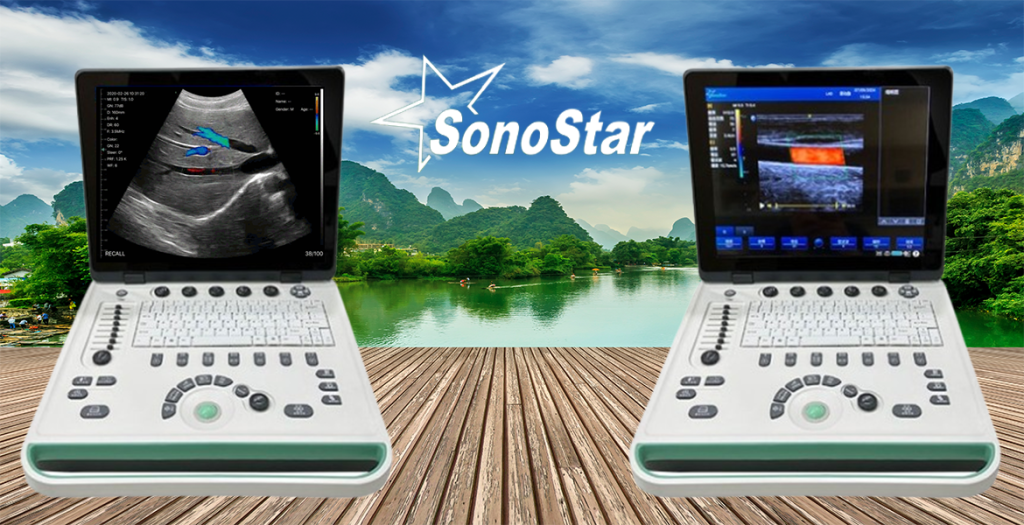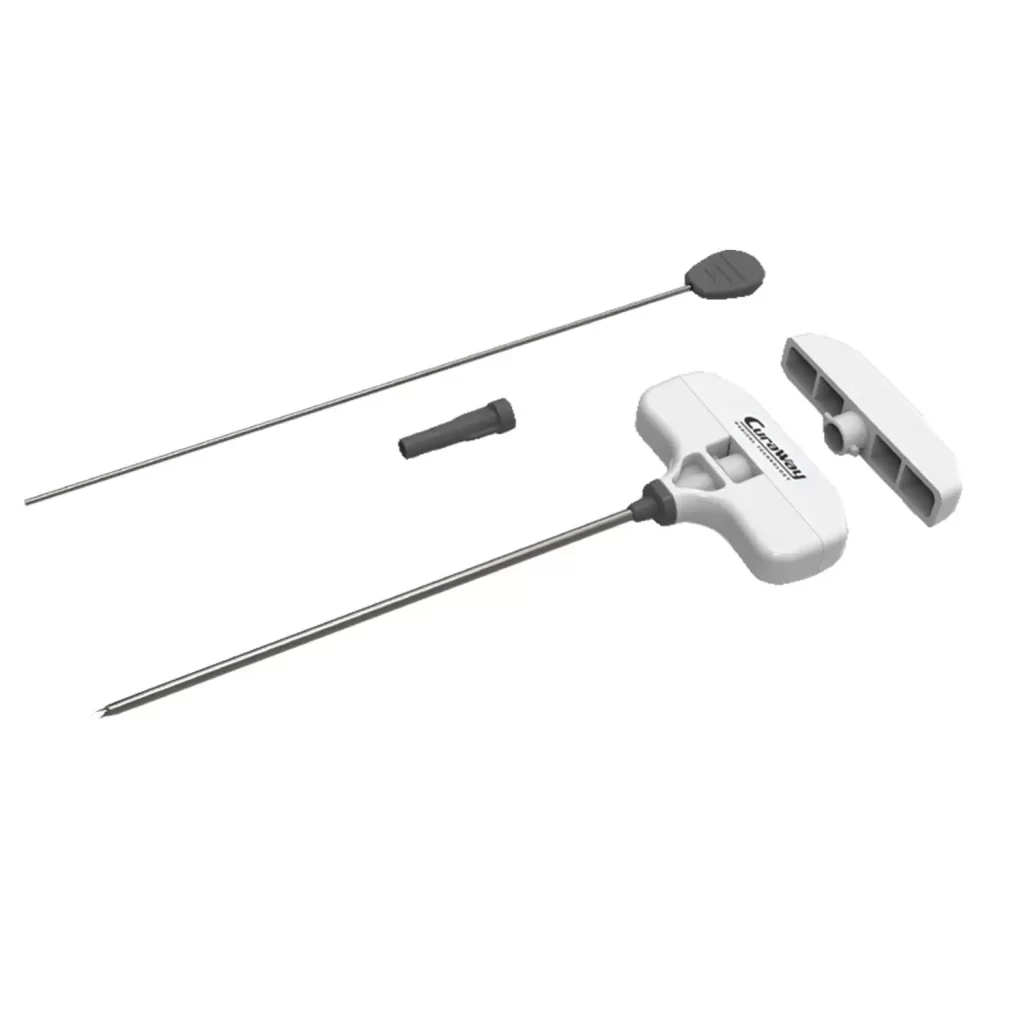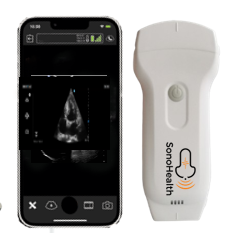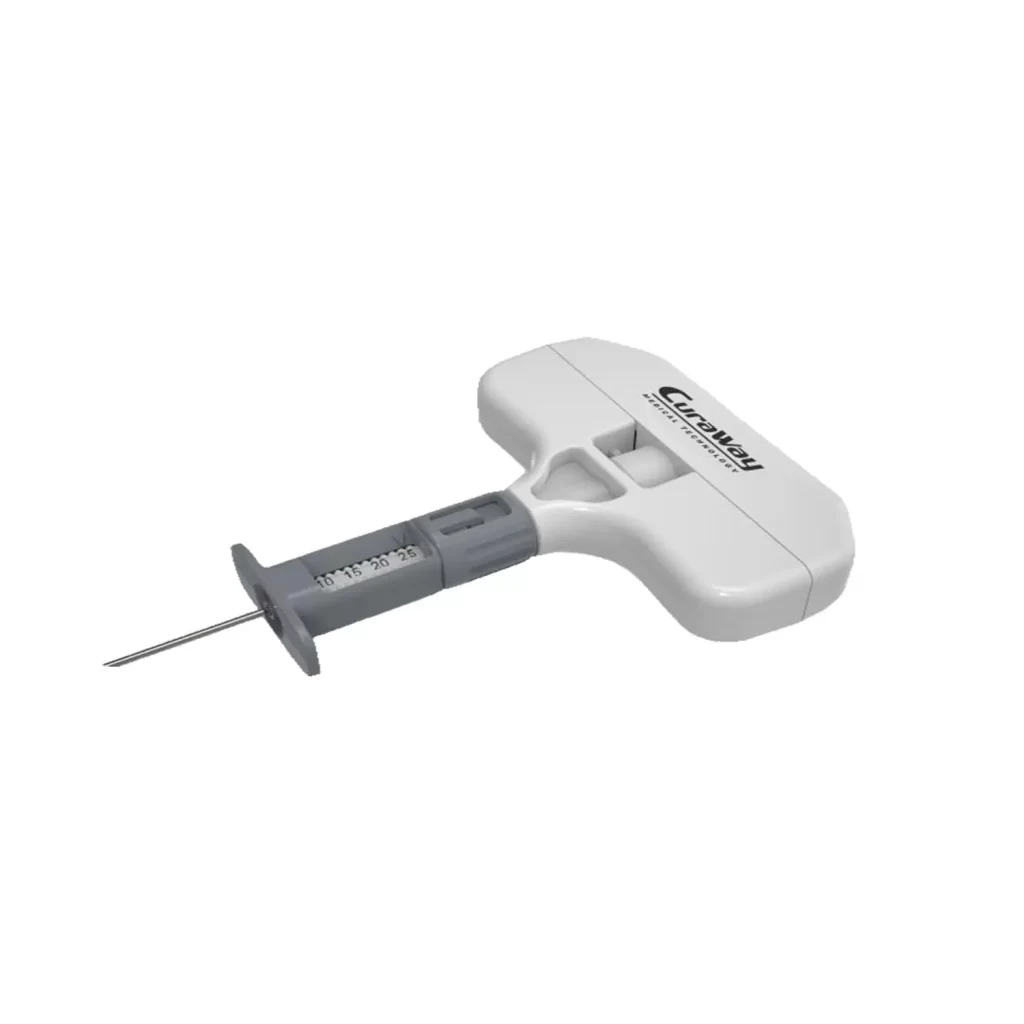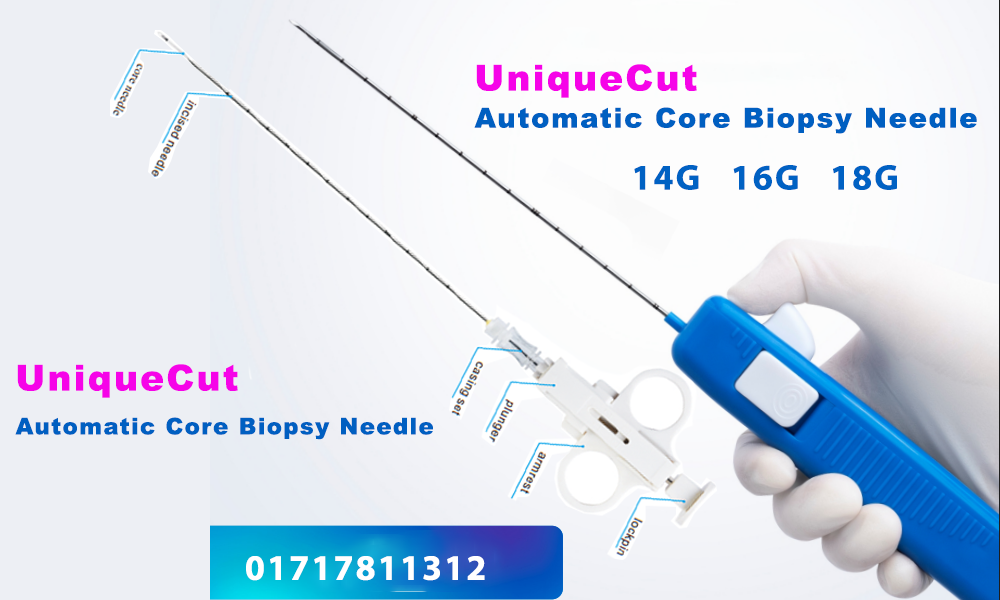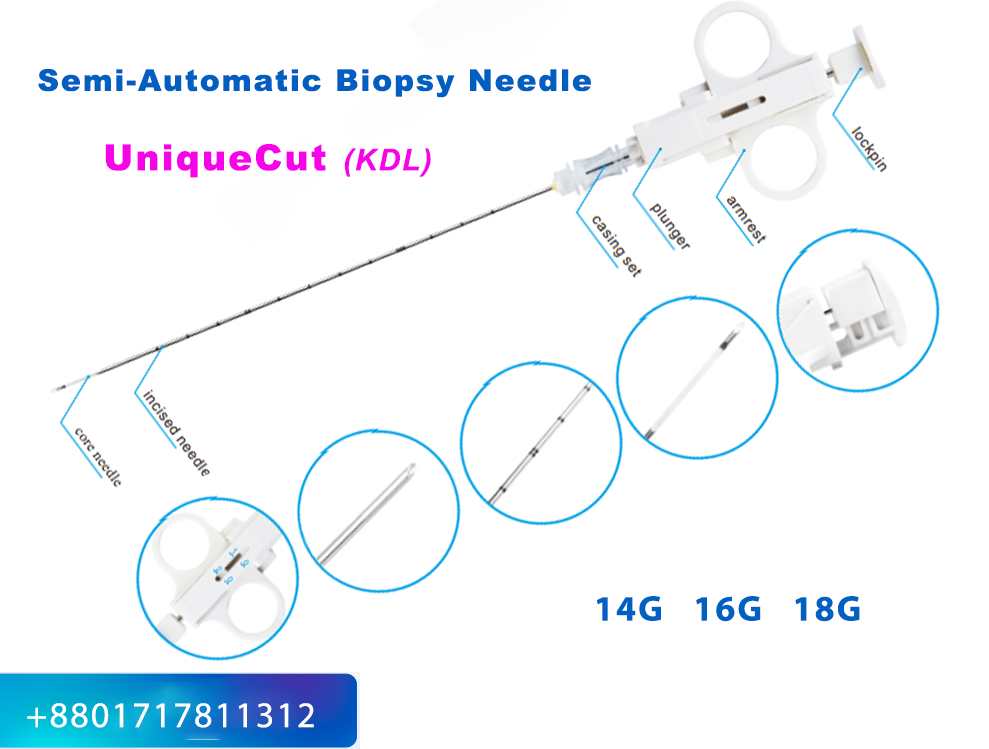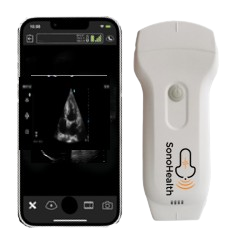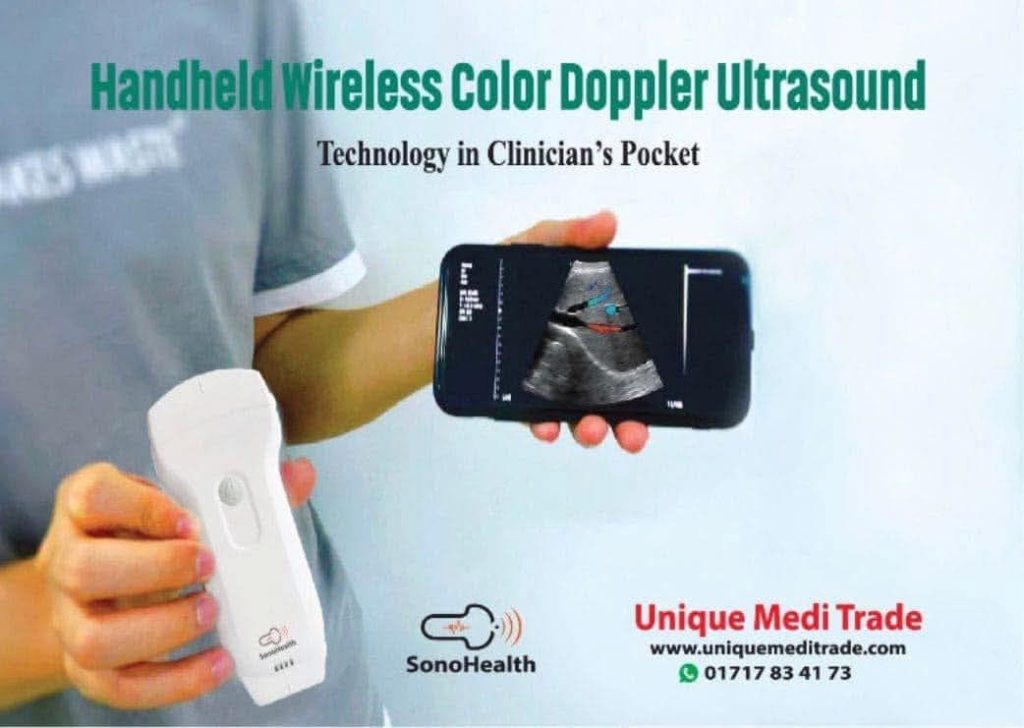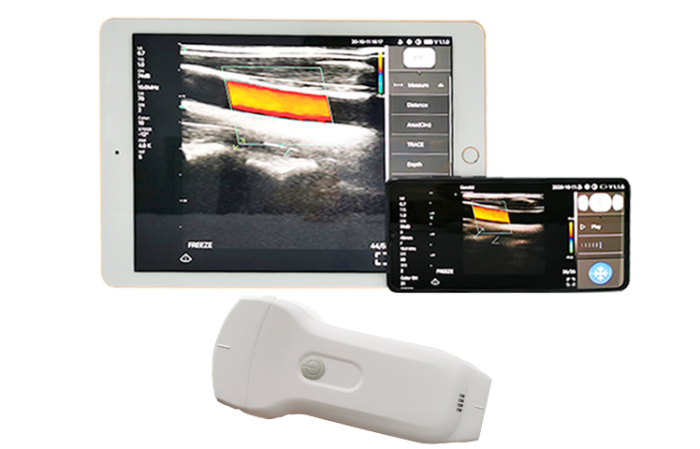A Milestone in Modern Surgery: Successful Completion of the 1st Symposium on Radiofrequency Ablation (RFA) in Surgical Diseases in Bangladesh...
Read More
Ultrasound Machine
Ultrasound Machine: A Game Changer in Modern Diagnostics In the ever-evolving world of medical technology, few tools have revolutionized healthcare...
Read More
Best Bone Marrow Biopsy Needle
🏆 Best Bone Marrow Biopsy Needle: Why CuraWay Leads in Bangladesh When it comes to obtaining accurate, high-quality bone marrow...
Read More
Bone Marrow Biopsy Needle in Bangladesh
Bone Marrow Biopsy Needle: A Critical Tool in Modern Hematology Bone marrow biopsy is a vital diagnostic procedure used to...
Read More
Wireless Ultrasound: Revolutionizing Point-of-Care Imaging
Wireless Ultrasound: Revolutionizing Point-of-Care Imaging In the rapidly evolving world of medical technology, few innovations have disrupted traditional practices like...
Read More
Bone Marrow Aspiration Needles Supplier in Bangladesh
Bone Marrow Aspiration Needles Supplier in Bangladesh – High-Quality Instruments for Hematology & Oncology Bone marrow aspiration is a critical...
Read More
Core Biopsy Needle in Bangladesh
Core Biopsy Needle in Bangladesh: A Critical Tool for Early Diagnosis Introduction In recent years, Bangladesh has witnessed a significant...
Read More
Best Breast Specialist Surgeon in Bangladesh
Prof. Dr. Md. Mizanur Rahman – The Best Breast Specialist Surgeon in Bangladesh Introduction Breast cancer remains one of the...
Read More
Biopsy Needle – Everything You Need to Know
Biopsy needle is a crucial medical device used in the diagnosis of various diseases, especially cancer. As medical technology advances,...
Read More
Where to Buy Core Biopsy Needles in Bangladesh
Where to Buy Core Biopsy Needles in Bangladesh – Trusted Supplier for High-Quality Biopsy Devices In modern medical diagnostics, core...
Read More
Best Automatic Core Biopsy Needle in Bangladesh
Best Automatic Core Biopsy Needle in Bangladesh – UniqueCut (KDL) by Unique Medi Trade When it comes to accurate...
Read More
Unique Medi Trade: A Leading Medical Equipment Supplier in Bangladesh
In the rapidly advancing healthcare sector of Bangladesh, choosing the right medical equipment supplier is crucial for ensuring high-quality patient...
Read More
Biopsy Needle Distributor in Bangladesh
Biopsy Needle Distributor in Bangladesh – Unique Medi Trade If you're searching for a trusted biopsy needle distributor in Bangladesh,...
Read More
Best Semi-Automatic Biopsy Needle in Bangladesh
UniqueCut (KDL) Semi-Automatic Biopsy Needle: Precision, Safety, and Reliability in Every Sample Introduction In today’s diagnostic and interventional medicine, biopsy...
Read More
Best Biopsy Needle in Bangladesh : UniqueCut Core Biopsy Needle
UniqueCut Core Biopsy Needle: The Best Biopsy Needle in Bangladesh 1. Introduction In modern healthcare, early and accurate diagnosis is...
Read More
3-in-1 Wireless Ultrasound: The Future of Portable Imaging
Experience the Power of 3-in-1 Wireless Ultrasound: The Future of Portable Imaging In recent years, point-of-care ultrasound (POCUS) has transformed...
Read More
3 in 1 Wireless USG
Revolutionizing Point-of-Care Diagnosis with 3 in 1 Wireless USG The 3 in 1 wireless USG (Ultrasound Sonography) device is a...
Read More
Best Handheld Wireless Ultrasound Devices in Bangladesh
Best Handheld Wireless Ultrasound Devices in Bangladesh: A Practical Review for Doctors Introduction The landscape of diagnostic imaging in Bangladesh...
Read More
Market Leader of Handheld Wireless Ultrasound Machines in Bangladesh
🥇 Unique Medi Trade is the Market Leader of Handheld Wireless Ultrasound Machines 🔹 Why Unique Medi Trade is the...
Read More
Top Handheld Wireless Ultrasound Machines in Bangladesh 2025
Handheld Wireless Ultrasound Machines in Bangladesh 2025 1. SonoWave 3-in-1 Wireless Color Doppler Ultrasound Distributor: SonoWave TechnologiesHighlights: ✅ 3-in-1 probe:...
Read More


